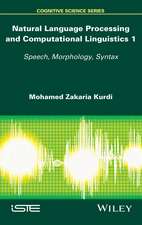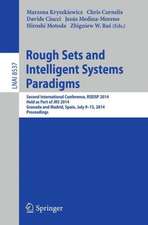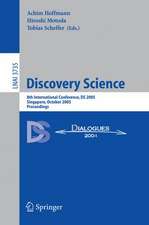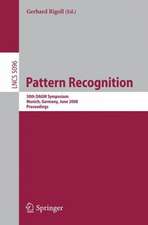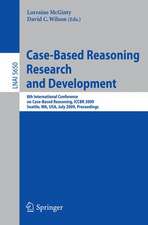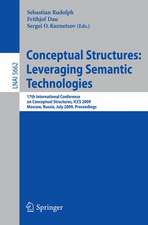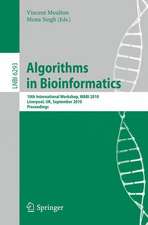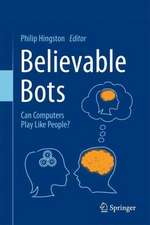Instance Selection and Construction for Data Mining: The Springer International Series in Engineering and Computer Science, cartea 608
Editat de Huan Liu, Hiroshi Motodaen Limba Engleză Hardback – 28 feb 2001
One of the major means of instance selection is sampling whereby a sample is selected for testing and analysis, and randomness is a key element in the process. Instance selection also covers methods that require search. Examples can be found in density estimation (finding the representative instances - data points - for a cluster); boundary hunting (finding the critical instances to form boundaries to differentiate data points of different classes); and data squashing (producing weighted new data with equivalent sufficient statistics). Other important issues related to instance selection extend to unwanted precision, focusing, concept drifts, noise/outlier removal, data smoothing, etc.
Instance Selection and Construction for Data Mining brings researchers and practitioners together to report new developments and applications, to share hard-learned experiences in order to avoid similar pitfalls, and to shed light on the future development of instance selection. This volume serves as a comprehensive reference for graduate students, practitioners and researchers in KDD.
| Toate formatele și edițiile | Preț | Express |
|---|---|---|
| Paperback (1) | 994.26 lei 6-8 săpt. | |
| Springer Us – 8 dec 2010 | 994.26 lei 6-8 săpt. | |
| Hardback (1) | 1003.17 lei 6-8 săpt. | |
| Springer Us – 28 feb 2001 | 1003.17 lei 6-8 săpt. |
Din seria The Springer International Series in Engineering and Computer Science
- 24%
 Preț: 1041.98 lei
Preț: 1041.98 lei - 20%
 Preț: 643.50 lei
Preț: 643.50 lei - 18%
 Preț: 1225.62 lei
Preț: 1225.62 lei - 18%
 Preț: 965.02 lei
Preț: 965.02 lei - 20%
 Preț: 646.12 lei
Preț: 646.12 lei - 18%
 Preț: 948.79 lei
Preț: 948.79 lei - 20%
 Preț: 646.62 lei
Preț: 646.62 lei - 15%
 Preț: 637.46 lei
Preț: 637.46 lei - 20%
 Preț: 643.83 lei
Preț: 643.83 lei - 18%
 Preț: 949.23 lei
Preț: 949.23 lei - 20%
 Preț: 644.48 lei
Preț: 644.48 lei - 20%
 Preț: 994.92 lei
Preț: 994.92 lei - 20%
 Preț: 645.97 lei
Preț: 645.97 lei - 18%
 Preț: 946.87 lei
Preț: 946.87 lei - 20%
 Preț: 995.57 lei
Preț: 995.57 lei - 18%
 Preț: 956.99 lei
Preț: 956.99 lei - 20%
 Preț: 644.98 lei
Preț: 644.98 lei - 15%
 Preț: 649.54 lei
Preț: 649.54 lei - 18%
 Preț: 950.21 lei
Preț: 950.21 lei - 18%
 Preț: 1221.38 lei
Preț: 1221.38 lei - 18%
 Preț: 957.62 lei
Preț: 957.62 lei - 15%
 Preț: 643.99 lei
Preț: 643.99 lei - 18%
 Preț: 948.47 lei
Preț: 948.47 lei - 18%
 Preț: 947.35 lei
Preț: 947.35 lei - 20%
 Preț: 1284.65 lei
Preț: 1284.65 lei - 20%
 Preț: 1628.31 lei
Preț: 1628.31 lei - 20%
 Preț: 1285.78 lei
Preț: 1285.78 lei
Preț: 1003.17 lei
Preț vechi: 1253.96 lei
-20% Nou
Puncte Express: 1505
Preț estimativ în valută:
191.96€ • 205.27$ • 160.05£
191.96€ • 205.27$ • 160.05£
Carte tipărită la comandă
Livrare economică 18 aprilie-02 mai
Preluare comenzi: 021 569.72.76
Specificații
ISBN-13: 9780792372097
ISBN-10: 0792372093
Pagini: 416
Ilustrații: XXV, 416 p.
Dimensiuni: 155 x 235 x 29 mm
Greutate: 0.86 kg
Ediția:2001
Editura: Springer Us
Colecția Springer
Seria The Springer International Series in Engineering and Computer Science
Locul publicării:New York, NY, United States
ISBN-10: 0792372093
Pagini: 416
Ilustrații: XXV, 416 p.
Dimensiuni: 155 x 235 x 29 mm
Greutate: 0.86 kg
Ediția:2001
Editura: Springer Us
Colecția Springer
Seria The Springer International Series in Engineering and Computer Science
Locul publicării:New York, NY, United States
Public țintă
ResearchCuprins
1 Data Reduction via Instance Selection.- 2 Sampling: Knowing Whole from Its Part.- 3 A Unifying View on Instance Selection.- 4 Competence Guided Instance Selection for Case-Based Reasoning.- 5 Identifying Competence-Critical Instances for Instance-Based Learners.- 6 Genetic-Algorithm-Based Instance and Feature Selection.- 7 The Landmark Model: An Instance Selection Method for Time Series Data.- 8 Adaptive Sampling Methods for Scaling Up Knowledge Discovery Algorithms.- 9 Progressive Sampling.- 10 Sampling Strategy for Building Decision Trees from Very Large Databases Comprising Many Continuous Attributes.- 11 Incremental Classification Using Tree-Based Sampling for Large Data.- 12 Instance Construction via Likelihood-Based Data Squashing.- 13 Learning via Prototype Generation and Filtering.- 14 Instance Selection Based on Hypertuples.- 15 KBIS: Using Domain Knowledge to Guide Instance Selection.- 16 Instance Sampling for Boosted and Standalone Nearest Neighbor Classifiers.- 17 Prototype Selection Using Boosted Nearest-Neighbors.- 18 DAGGER: Instance Selection for Combining Multiple Models Learnt from Disjoint Subsets.- 19 Using Genetic Algorithms for Training Data Selection in RBF Networks.- 20 An Active Learning Formulation for Instance Selection with Applications to Object Detection.- 21 Filtering Noisy Instances and Outliers.- 22 Instance Selection Based on Support Vector Machine.- Appendix: Meningoencepalitis Data Set.










